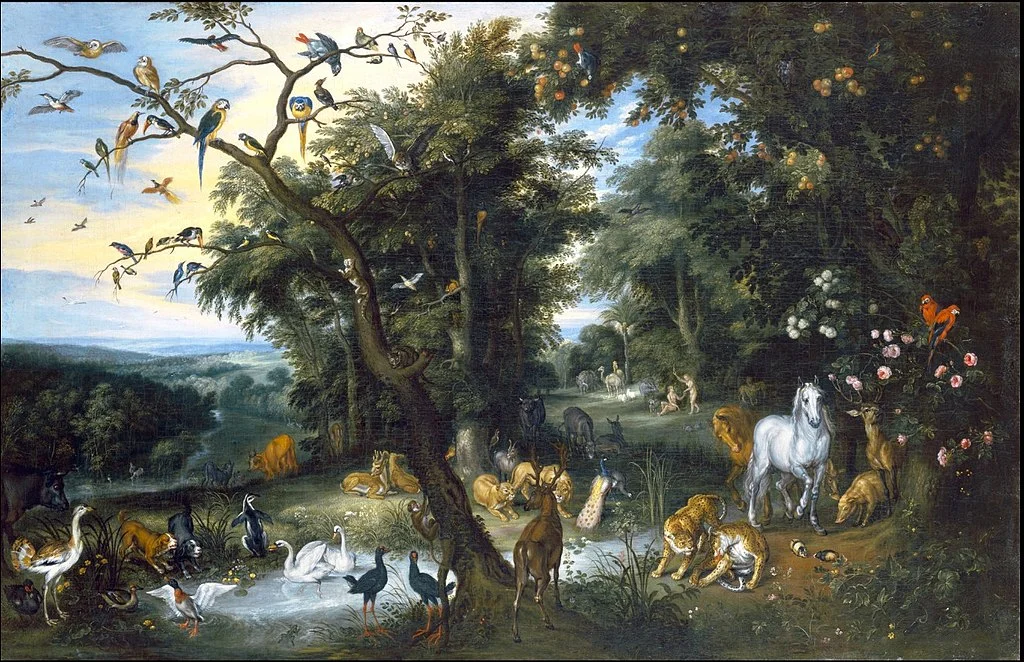The Garden of Eden, a mythical paradise, has captured the imagination and curiosity of people for centuries. Described in religious texts and cultural narratives, it is portrayed as the idyllic dwelling place of the first human beings, Adam and Eve, before their expulsion. In this article, we will explore various theories that try to answer Where the Garden of Eden was located and where it is located today.
However, the search for the physical location of Eden is complicated by the allegorical and metaphorical nature of the account. The descriptions provided in religious texts may not align with our modern understanding of geography and historical records. As a result, some scholars argue that Eden should be understood as a symbolic representation rather than a tangible geographical site.
Religious Perspectives on the Location of the Garden of Eden
The Garden of Eden, also referred to as Gan Eden in Hebrew, holds a profound significance within Abrahamic religious and cultural traditions. It is depicted in the Book of Genesis as the pristine abode of the first human beings, Adam and Eve, before their expulsion. Similarly, the Quran refers to it as the Garden. Eden is described as a paradisiacal sanctuary brimming with abundance, where Adam and Eve resided in a state of purity, accompanied by a vibrant array of plants and animals.

Within the Garden, Adam and Eve enjoyed freedom and abundance. However, they were forbidden to eat fruit from one specific tree, the Tree of Knowledge of Good and Evil. Eve succumbed to her desires and ate the forbidden fruit after being tempted by the Devil, symbolized by a serpent in the Bible. As a result, the couple was banished from Eden, forever severed from its blissful existence, and cherubim type of angels were placed to guard its entrance.

The actual location of Eden has intrigued scholars and enthusiasts for centuries. According to the Book of Genesis, the Garden is said to be situated at the intersection of four rivers of which Tigris and Euphrates are the only ones still in existence today. Some propose that Eden might have been located in the region of Ancient Mesopotamia, others explore the possibility of an African location, while some modern theories are even looking at Gobekli Tepe in Turkey.
However, the Garden of Eden is not just a physical place but describes a state of spiritual connection and harmony with the divine which was broken due to Adam and Eve’s disobedience.
Where was the Garden of Eden Located?
There are various theories regarding the location of the Garden of Eden, with one prevailing view suggesting proximity to the Persian Gulf. This perspective, supported by biblical scholars like John Calvin, posits that the Shatt al-Arab, formed by the convergence of the Tigris and Euphrates rivers near the Persian Gulf, is the river that flowed out of the Garden.
Another commonly proposed location is Africa, stemming from scientific evidence indicating the continent as the birthplace of human life. Classical texts also mention Africa as a potential site. The Talmud, for instance, mentions the interior of Africa as a plausible location for Eden, although other passages point elsewhere.
Additionally, alternative suggestions have emerged, including Java, Sri Lanka, Seychelles, and Sundaland in the South China Sea. The search for the exact location of Eden continues to inspire diverse speculations.
Is the Garden of Eden Located in Modern Day Iraq?
According to the book of Genesis, the Garden of Eden is described as being located in the east, where four rivers meet. Two of these rivers, the Tigris and Euphrates, still exist today, leading to the belief that the Garden was situated in what is now Iraq. This theory is supported by the fact that the modern-day Tigris and Euphrates rivers flow through Iraq, aligning with the eastern direction mentioned in the biblical text.
However, this theory is challenged by the dynamic nature of rivers. Over time, rivers can change their course, and the geographical landscape referenced in the Bible may have undergone significant alterations. Consequently, it is possible that the Tigris and Euphrates rivers did not flow through any part of Iraq during the time when the Garden of Eden is said to have existed.
Can Gobleki Tepe be the current location of the Garden of Eden?
Gobekli Tepe, an archaeological site in southeastern Turkey, has garnered significant attention since its discovery in 1994. The site consists of oblong stones that were later identified as the flat tops of T-shaped megaliths. These ancient megaliths are adorned with intricate inscriptions, featuring intriguing images of boars, ducks, hunting scenes, and various animals like serpents, crayfish, and lions.
The late Professor Klaus Schmidt, who led the excavations with the German Archaeological Institute, proposed that Gobekli Tepe served as a gathering place for bands of hunters who constructed the site over several decades. It was a place where they would convene periodically, living in animal-skin tents and hunting local game for sustenance.
Interestingly, some have suggested that Gobekli Tepe could be the actual location of the Garden of Eden described in the book of Genesis. While many scholars and non-religious individuals view the Eden story as folklore or allegory, it is notable that Gobekli Tepe aligns with certain geographical references mentioned in the biblical text. According to Genesis, Eden is situated west of Assyria, precisely where Gobekli Tepe is located. Additionally, Eden is described as being near four rivers, including the Tigris and Euphrates, both of which flow close to Gobekli Tepe. Ancient Assyrian texts even mention a place called ‘Beth Eden,’ a kingdom situated just 50 miles away from the site.
This intriguing correlation has sparked speculation that Gobekli Tepe may offer a glimpse into humanity’s ancient past—a time of innocence and leisure, when humans lived as hunter-gatherers, freely enjoying the abundance of nature. The shift to agriculture, symbolized by the biblical account of the fall from Eden, brought forth a more challenging existence marked by toil and drudgery.
While the connection between Gobekli Tepe and the Garden of Eden remains speculative, the site’s significance in shedding light on our early human history cannot be denied. It serves as a testament to the ingenuity and cultural richness of our ancestors, leaving us with a sense of wonder and a desire for further exploration.
Symbolic and Spiritual Interpretations of the Garden of Eden
The Garden of Eden is a symbol of unparalleled harmony, a realm where absolute bliss and perfection prevailed. It is regarded as the pinnacle of God’s creation, a paradisiacal sanctuary. Consequently, there is a prevalent belief among some theologians that Eden was not a physical place but rather a state of divine existence that humanity lost when Adam and Eve succumbed to temptation and severed their connection with God. This symbolic narrative may reflect the profound shift from a nomadic hunter-gatherer lifestyle to a settled agricultural society.
In Islamic theology, the prevailing belief is that the Garden of Eden was not a physical place on Earth but rather connected to the concept of Paradise in Heaven. According to this perspective, Adam and Eve resided in heaven initially and only descended to Earth after their transgression. As mentioned earlier, theologians who interpret the story allegorically understand Eden as a state of profound spiritual and psychological unity with God, rather than a specific geographical location.
The Elusiveness of the Garden of Eden
Despite centuries of speculation and exploration, the exact location of the Garden of Eden continues to elude us. The passage of time and the cataclysmic event of the Flood described in the Bible have likely altered the Earth’s geography, making it highly unlikely that the original landscape of Creation still exists. The enigmatic nature of Eden raises doubts about the feasibility of ever pinpointing its exact location.
According to biblical accounts, the Flood served as a means of cleansing the Earth, suggesting that significant geological transformations took place. These dramatic changes would have undoubtedly reshaped the planet’s surface, making it even more challenging to identify remnants of the original Garden.
Ultimately, the search for the physical location of Eden remains elusive and subject to various interpretations. Some view Eden as a literal place, while others perceive it as a symbolic representation of humanity’s yearning for a lost paradise. The concept of Eden may encompass elements of both the physical and the metaphorical. Regardless of its actual whereabouts, the significance of Eden lies in its profound symbolism. It symbolizes humanity’s innate longing for a state of innocence, unity, and spiritual harmony with the divine.
